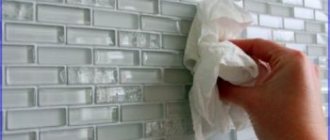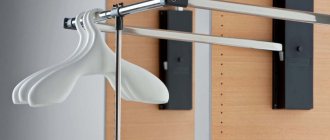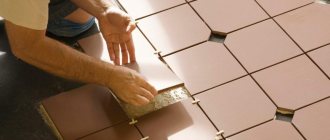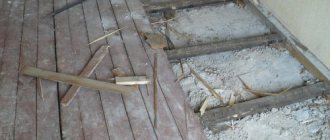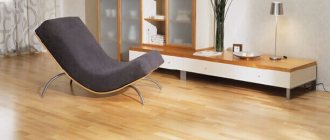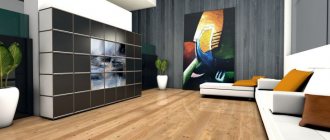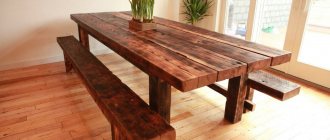Purpose and characteristics of glue
Two-component EDP adhesive is a universal mixture consisting of epoxy resin and several components as improvers. The hardener required for polymerization is included separately.
Before starting work, the components are mixed according to the specified proportions. Then the hardener is introduced, which is necessary to start the chemical reaction, after which the glue begins to harden.
The release form provides glue in syringes or bottles, but this does not have any effect on the properties of the mixture. It is most convenient to use the product in a syringe, as it can be accurately measured and applied.
The adhesive is adapted for the following materials:
- metals and alloys;
- glass surfaces;
- wooden products;
- porcelain;
- ceramics;
- decorative facing materials.
It is prohibited to apply glue to objects that have direct contact with food! Glass fabrics, fiberglass, sawdust, paper and fabrics are well saturated with the adhesive composition.
In the future, they are used in the automotive industry (car bumpers), shipbuilding, in everyday life and various types of modeling.
The epoxy composition EDP has proven itself well in repairing interior parts, furniture, audio and electrical equipment, repairing plumbing fixtures for baths and toilets, and sports equipment.
Epoxy glue: instructions for use
Epoxy adhesive of the Poxipol brand is used in many areas for fastening parts of products made of various materials. The versatility of the product allows you to glue, restore, restore:
- furniture;
- toys;
- mirrors;
- glass;
- costume jewelry;
- pipes;
- boats;
- details of mechanisms.
Given the high adhesion with most materials, it is possible to carry out repair work using epoxy glue even with concrete products.
Poxipol glue reliably fixes connecting elements and fittings. Having such a tool on hand, you can easily glue hooks, holders for necessary household items, and even loose ceramic tiles to the wall to the wall.
The effectiveness of application has also been established in the field of car repair, as a sealant for joints, putty for bumpers and sealing damage.
The glue is also suitable for high-quality sealing of cracks, seams and other joints in rooms with high humidity. Gluing tiles in a pool or making spot repairs to shower stalls will not be a problem.
Work must be carried out in a room with good ventilation. All operations with epoxy glue are performed with gloves, a charcoal mask and thick clothing. Clean the bonded surfaces, treat them with a degreaser and let them dry.
Prepare the container in advance. Open the glue package and squeeze out the required amount of epoxy. Dilute the resin with hardener in a ratio of 1:10 or 1:5 (depending on the recommendations in the manufacturer’s instructions). Mix the ingredients thoroughly with a wooden spatula or stick until completely homogeneous.
Gently apply the resulting mixture to the workpieces being processed. Fix them and remove excess glue. The whole process must be completed in 4 minutes, until the glue has hardened.
Epoxy adhesive is used in the following areas:
- construction;
- mechanical engineering;
- aircraft design;
- shipbuilding;
- everyday life
In the construction industry, epoxy adhesive is used for three-layer panels and for joining metal bridge structures. The glue fills cracks in concrete well, holding the surface together. Suitable for fixing ceramic tiles. In mechanical engineering, epoxy adhesive is used to glue plastic parts and adhere them to metal surfaces.
Glue with the addition of fiberglass is used to repair body parts and upholstery. Indispensable when creating abrasive tools. Epoxy adhesive holds solar cells in place and is used for exterior thermal insulation. Light boat hulls are made of fiberglass, which is impregnated with epoxy adhesive to provide strength and a smooth finish.
We suggest you read: How to mix clay with sand for a kiln
To use epoxy glue, it is necessary not only to properly prepare the composition, but also to prepare the surface for gluing. The first stage of preparatory work consists of cleaning the surfaces of the parts to be glued with fine sandpaper. The goal is to create a rough surface. The next step is degreasing the cleaned elements.
After preparing the surface, a solution of epoxy glue is prepared. The hardener and base material are squeezed into a glass container or onto a plastic liner. The amount of hardener is indicated on the packaging. The usual ratio is one to ten. The substances are mixed until a homogeneous mass is formed.
If the resin does not contain a plasticizer, then it is added according to the manufacturer's instructions. The resulting composition is applied to the damaged area, the parts are firmly fixed to each other. Rigid fixation is required within 15 minutes with a sufficient amount of hardener. Under normal conditions, the glue polymerizes within a few hours. Larger areas and volumes require more time. The kneading process is shown in the video below.
All work can be divided into three main stages - surface preparation, mixing the adhesive composition, and direct gluing of products. Any instructions for use mean that the item can be repaired correctly and reliably only if it is cleaned properly.
There are a number of tips when gluing different surfaces:
- the bottle or tube with resin is too cold, it is better to warm it up before use (this can be done in a bowl with hot water, placing the product there before opening);
- if after the first use the glue must be stored, it should be placed in the refrigerator and as much air as possible must first be removed;
- it is necessary to strictly observe the proportions of mixing the resin and hardener, which are indicated in the manufacturer’s description, otherwise the result will be unpredictable;
- You can add sawdust, shavings, chalk to the finished glue - these fillers will help to better seal large cracks (filler norms are 10-20%).
Properties and technical specifications
Let's consider the main properties of the EDP brand:
- good strength against any mechanical impact;
- slight shrinkage;
- good adhesion properties relative to other materials;
- does not conduct current;
- moisture resistant.
“After the mixture has hardened, you can continue to work with it. It can be sanded, polished, drilled, painted, and also sawed.
If necessary, various pigments are mixed into the epoxy composition before it hardens and then the adhesive mass is finally formed.
When maintaining a temperature of 18-25C and introducing a thickener, EDP epoxy adhesive remains active for four hours.
A shear strength index of 8 MPa (given based on metal bonding) is a good indicator for the composition.
Properties of epoxy resin
Epoxy resins are part of a “family” of universal resins that are oligomers and acquire their final properties after curing. The composition of the material is complex, it includes epichlorohydrin, phenols, binders and modifiers.
Epoxy turns into a polymer after contact with the hardener. The quality of the finished material depends on the ratio of the components - it can become hard like glass or resembling rubber. The final properties of the epoxy are:
- lack of reaction to the action of weak acids, alkalis, household chemicals;
- high moisture resistance, resistance to mechanical factors, abrasives;
- low shrinkage or its complete absence;
- health safety after curing;
- excellent adhesion to metal, concrete, and most other construction and household materials;
- good performance of the adhesive seam.
Epoxy glue and resin are affordable products for use at home. They can be used to glue plastic, wood, glass and ceramics, brick and iron. Only silicone and polyethylene may not be held together with an adhesive composition, and sometimes even deteriorate from epoxy. Most often at home, the material is used for casting jewelry and embodying creative ideas, for repairing car parts, filling the bottom of boats, floors in the bathroom and garage.
Preparation of the adhesive composition
The instructions provided indicate that the EAF is prepared exclusively before starting work. Mixing occurs at a ratio of 10:1 (epoxy resin to hardener).
To properly prepare the adhesive composition you need:
- heat the bottle with resin to a temperature of 50-70C, lowering it into warm water;
- wait ten minutes;
- use the glue components in small proportions, taking ten parts of resin per one measuring part of the thickener, adhering to the paper scale on the jar;
- mix everything thoroughly for about 3-5 minutes;
- work with the composition within two hours from the moment of preparation, otherwise it will thicken and the quality of the seam will be spoiled.
Safety
The type of composition is not the only reason that affects the polymerization rate. The composition differs between hardeners, solvents, fillers and plasticizers. Some types of compositions are better suited only for plastic or metal; understanding the features is the key to the right choice.
Hardeners
The first type of hardener consists of amines, diamines and polyamines. Excipients are polyethylene polyamine and hexamethylenediamine. Amine hardener is suitable for all epoxy resins. The composition exhibits properties at room temperature, which is why it is called cold. Acid hardeners contain carboxylic anhydrides and acids.
Anhydrides are represented by maleic, hexahydrophthalic and phthalic substances. The strength of joints treated with epoxy adhesive with an acid hardener is higher than that of amine hardeners. The disadvantage is the difficulty of application, requiring heating to a temperature of 200 degrees. Before heating the composition, there is more time for applying the glue and its distribution. To work, you will need a construction hair dryer, which will heat the composition to the temperature specified in the instructions.
Note! The hot gluing method improves the physical and chemical properties of the epoxy composition.
The first two types of hardeners are inexpensive, so they are widely used when using resin-based adhesives. PEPA polymerizes the glue at room temperature. The brown tint is the only drawback that prevents the achievement of transparency. The PEPA hardener is not used when gluing parts in contact with food or drinking water.
Along with classic ones, modified components are also used, among them the following are popular:
- UP-620;
- 921;
- M-4;
- Etal;
- AF-2.
UP-620 is a substance used for gluing two surfaces in conditions of high humidity. To start hardening, 18% of the substance from the total volume of glue is sufficient. The component is applied at room temperature. The nine hundred and twenty-first series increases the resistance of the bonded area to ultraviolet radiation.
Component M-4 belongs to the group of amine hardeners that have undergone modification. The liquid is colored red-brown and has high viscosity. For polymerization, 25% of the hardener is added to the total volume of glue. The strength of the joint is not compromised if gluing is performed at a temperature of 2 degrees.
Another component based on amino acids is “Etal”. The substance does not emit toxic fumes, so it is used in enclosed spaces. Withstands temperatures down to -20 degrees. The hardener is used for anti-corrosion coating of metal surfaces, repairing metal and polymer pipes, sealing joints, and creating fillers.
Solvents
When gluing surfaces, you cannot do without getting the glue on clothing, skin or surrounding objects. Solvents are used to remove the composition. Aggressive types of glue cause skin irritation, so hands are washed with soap and dried with a soft towel. To remove residue from the skin, use acetone or nail polish remover.
Clothes are cleaned of small stains of the substance. The affected areas immediately change color, and the fibers are destroyed by the resin. Small stains can be removed with ethyl alcohol or a 10% ammonia solution. Liquids are applied to the stain and after a few minutes the glue is removed with a metal object. Another option is freezing, which involves placing the item in a bag and placing it in the freezer.
Fillers
Fillers for epoxy adhesives can be made independently or purchased ready-made. The goal is to create a substance with increased viscosity, which is applied like putty to problematic joints of pipes and other parts. Crushed glass fiber is used as filler. The material is durable and can withstand high loads, which, when combined with epoxy glue, provides good fixation.
Microspheres made of polyester and phenolic resins are added to the glue. The balls are hollow and filled with inert gases. When glue and beads are mixed, syntactic foam is formed. The composition is easy to process after polymerization. Colloidal silicon dioxide is used as a filler. The composition goes on sale under the name "Aerosil".
Another filler option is silver. The substance is known as aluminum powder. Serebryanka colors the composition gray and increases electrical conductivity. Such properties are in demand when gluing conductive parts. The cost of aluminum powder is higher than that of wood flour. Graphite powder is added to epoxy glue to give it a black color.
It is used as a coating for the bottom of ships, which provides a smooth and streamlined surface. It is destroyed by exposure to UV rays, so do not cover areas exposed to the sun. Titanium oxide gives the glue a white tint and also increases the viscosity of the substance. Compositions with this additive are used for household purposes, since the oxide is non-toxic, does not cause allergies and is resistant to alkalis and acids.
We suggest you familiarize yourself with: Adhesive for porcelain tiles types and features best brands
Expensive additives are replaced with improvised materials, including:
- chalk;
- cement;
- dentifrice;
- gypsum;
- sand;
- talc;
- flour;
- chopped fiberglass.
Chalk, tooth powder and gypsum give the glue a white color, but the materials absorb moisture, so they are used for decorative finishing. Cement increases the strength of the area undergoing gluing. For the same purpose, sand that has undergone preliminary cleaning and separation into fractions is used. Instead of wood flour, wheat or rye flour is used.
Plasticizers
Epoxy glue glues parts without adding a plasticizer, but it is more difficult to apply such a composition, and the hardened bonding area turns out to be fragile. The plasticizer adds elasticity to the glue, which prevents crumbling after polymerization. When gluing large parts, epoxy glue without a plasticizer will crack during the hardening process.
Plasticizers differ in composition and the purposes for which they are used. A common plasticizer is dibutyl phthalate. The composition is suitable for mixing with any types of epoxy adhesives and PVC adhesives. The disadvantage of the plasticizer is its versatility. Since the material is used with different compositions, its characteristics are average.
DEG-1 is used as a plasticizer. This is an epoxy resin that improves the properties of epoxy adhesives. The substance is added in a ratio of 1 to 5, and the adhesive becomes close in elasticity to bitumen. The disadvantage of the plasticizer is its high price, low quality and the brown tint that forms during hardening.
The composition is rarely used, because there are modified substitutes on the market with better characteristics. DEG-1 was replaced by S-7106. The plasticizer is a reactive diluent. When using plasticizer 7106, you will need to increase the amount of hardener. The calculation is based on the mass of plasticizer and epoxy resin.
The plasticizer or hardener may contain toxic substances, so when working with epoxy glue it is important to follow safety rules. When cleaning surfaces, you cannot do without a respirator that protects the respiratory organs from dust from the parts being glued together. The respirator is purchased with carbon filters that block the penetration of fumes from reacting substances.
During operation, intensive ventilation of the room is ensured. It is important to work with gloves so that the glue does not come into contact with the skin. When mixing components, disposable utensils are used, which are not used when eating. A container with soapy water is first prepared in which to wash your hands if the epoxy glue comes into contact with the skin. To make it easier to squeeze the composition out of the tube, the container is heated in warm water or on a radiator.
The use of any chemical means the observance of certain precautions. In the case of epoxy glue Poxipol, it is also necessary to secure the work process. Epoxy resin can emit toxic fumes during operation. In its solid state, epoxy glue is harmless, but it should still be handled and stored out of the reach of children.
Filled
Additional components added to the adhesive mixture are needed primarily to improve the quality of the glue, but they are sold separately.
Plasticizers and pigments can act in this capacity. There is no need to dilute them; they are added dry, since even a little water can immediately ruin the adhesive mixture.
Before introducing components, you should carefully study them and add them strictly according to the instructions. In order for the adhesive to maintain its ductility, additives should not account for more than ten to twenty percent of the total mass of EDP epoxy adhesive.
Applying glue
When using fabric as a reinforcement layer, it is applied to the surface to be repaired and then evenly covered with a layer of adhesive. Reapplying the layer, if required, is possible after twelve to twenty minutes.
“Without laying the adhesive fabric, the adhesive is applied in a thin layer on both surfaces to be joined. Then they are firmly fixed with a vice or other heavy objects.
The remaining glue should be removed immediately, as it will be difficult to do this later after it has hardened.
Leave the items fixed until completely hardened.
Receiving[ | ]
Scheme for the production of liquid epoxy resins by the batch method.
1 - reactor; 2, 6 - refrigerators; 3 - receiver; 4 - filters; 5 - apparatus for distilling toluene; 7 - collection[2]. Epoxy resin was first produced by the Swiss chemist Castan in 1936[1].
Epoxy resin is produced by polycondensation of epichlorohydrin
with various organic compounds: from phenol to edible oils, for example, soybean [
source not specified 1793 days
]. This method is called “epoxidation”.
Valuable grades of epoxy resins are obtained by the catalytic oxidation of unsaturated compounds. For example, this is how cycloaliphatic resins are obtained, valuable because they contain absolutely no hydroxyl groups and are therefore very hydroresistant, tracking- and arc-resistant.
For practical use of the resin, a hardener is needed. The hardener can be a polyfunctional amine or anhydride, sometimes an acid. Curing catalysts such as Lewis acids and tertiary amines, usually capped with a complexing agent such as pyridine, are also used. After mixing with a hardener, the epoxy resin can be cured - converted into a solid, infusible and insoluble state. If it is polyethylene polyamine (PEPA), then the resin will harden within a day at room temperature. Anhydride hardeners require 10 hours of time and heating to 180 °C in a heat chamber (and this does not take into account cascade heating from 150 °C).
Transportation and storage
EDP glue is transported only in accordance with the rules specified by GOST. The storage area must be dry.
Storage temperature ranges from +5 to +30C for original packaging. Protect from moisture and direct sunlight. Store for no more than two years.
Use in excess of storage standards is allowed, but the quality may be reduced.
Where is epoxy glue used?
Regardless of what type we are talking about, epoxy adhesive is used in a huge number of areas.
- Construction. This, of course, also includes internal repair work - gluing tiles, fastening metal and concrete. But epoxy is also used for larger-scale tasks, such as gluing reinforced concrete elements in bridge construction, joining panels, and strengthening concrete by filling cracks with resin.
- Automobile production and repair. Brake pads are secured using epoxy resins. The substance helps to glue plastic elements onto metal surfaces. Epoxy will help restore the gas tank, gearbox, trim, and body.
- Aircraft construction. Here, resin is used in conjunction with welding or even instead of it to secure elements at joints. And with the help of this product, thermal protection is installed inside and outside the case.
- Shipbuilding. Epoxy is also used here - both for securing various elements and for external processing. After all, as mentioned earlier, certain types of glue are especially resistant to moisture.
- And, of course, this tool will also come in handy at home. It can be used to repair dishes, shoes, and furniture. Epoxy has also found application in needlework.
We recommend: How to choose glue for foam plastic and use it correctly?
Fast curing EDP adhesive
EDP glue is sold in containers of 45/250 grams and is two-component. The first container contains the epoxy resin and additional components directly, and the second container contains the thickener.
The adhesive is intended for the following works:
- gluing composite and metal objects and alloys, ceramic, glass and other materials;
- repair and sealing of items;
- correction of defects, elimination of cracks and chips.
“Because the epoxy compound cures quickly, it is used as an analogue of cold welding.”
Epoxy adhesive cold welding
Epoxy resins as adhesive compositions can be used for many purposes and in different forms: in the form of cold-curing liquids, in the form of hot-curing liquids; in the form of a one-component hot-curing liquid; in the form of powders and tapes. Epoxy maple is widely used for gluing metals in aircraft and rocket manufacturing.
Epoxy maples are high-strength compounds, and as a result they require more careful preparation of the bonded surfaces than other less durable materials. In addition, since they have low strength against uneven peeling, to obtain the best results, the joint must be made in such a way that the stress is distributed over the surface of the entire adhesive layer.

